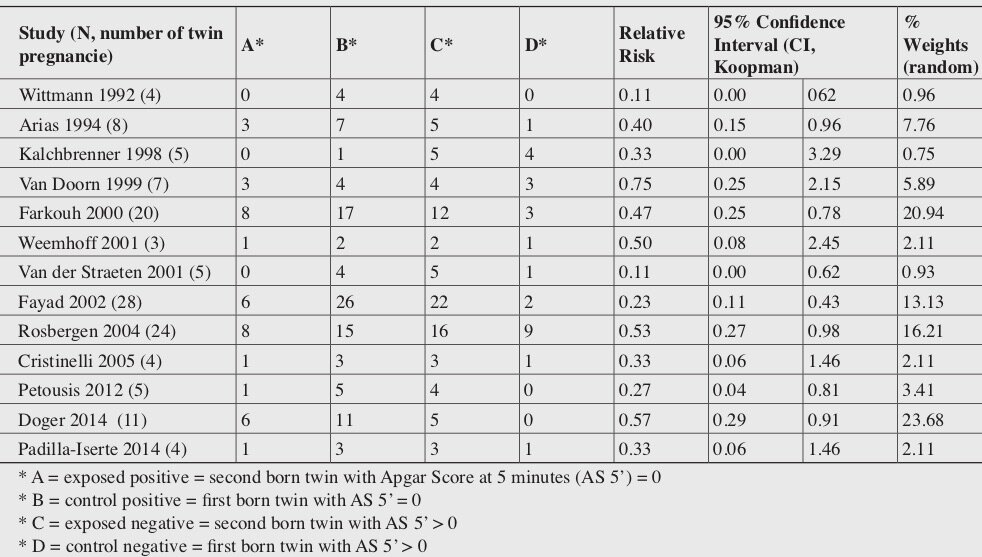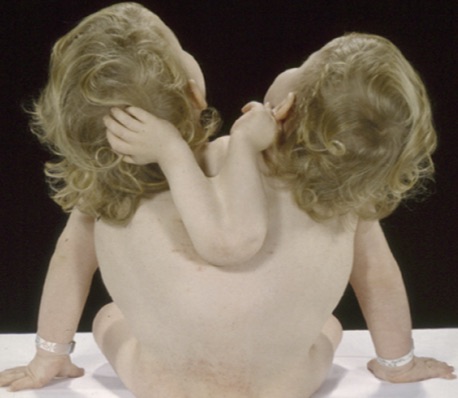Today’s page of Talmud continues an analysis of the fluctuating value of a perutah, the minimum amount that a man must pay to purchase his wife. For reasons that need not detain us, Rav Chisdah mentions a strange fact about Yehudit, the wife of the Rebbi Chiyyah:
לָאו הַיְינוּ דִּיהוּדִית דְּבֵיתְהוּ דְּרַבִּי חִיָּיא, דַּהֲוָה לַהּ צַעַר לֵידָה
Rav Chisdah explained: Is this not similar to the case of Yehudit, wife of Rabbi Chiyyah, who would have painful childbirths [and therefore wished to leave Rabbi Chiyyah]?
Elsewhere in the Talmud, (on a page that we will study on April 22nd, 2027,) there is more detail about one of Yehudit’s pregnancies. When I first read the story, I considered it to be entirely fanciful. It was impossible, so it seemed to me, to have actually occurred. Then I read the science, and I changed my mind. Let’s see if it changes yours. So let’s take a look at Niddah 27a:
Yehudit’s Special Twins
א"ר אבין בר רב אדא אמר רב מנחם איש כפר שערים ואמרי לה בית שערים מעשה ונשתהה ולד אחד אחר חבירו ג' חדשים והרי הם יושבים לפנינו בבית המדרש ומאן נינהו יהודה וחזקיה בני רבי חייא
Rabbi Avin bar Rav Adda says that Rav Menachem of the village of She’arim, and some say that he was from Beit She’arim, says: An incident occurred where one offspring remained in the womb after the other was born for three months, and both twins are sitting before us in the study hall. And who are they? They are Yehuda and Chizkiyya, the sons of Rabbi Chiyyah.
Delayed Interval births - what you need to know
When you look at the medical literature, it turns out that there are many case reports of delayed-interval twin births. This is probably because the number of multiple pregnancies has increased due to the expansion of assisted reproductive technology. In nearly all, the first twin died soon after delivery because it is too premature to survive.
Here is just one example. In 2019 a group from the Department of Clinical and Experimental Medicine at the University of Pisa in Italy published a case report with a very lengthy title: Delayed delivery of the second twin: Case report and literature review of diamniotic dichorionic twin pregnancy with very early preterm premature rupture of membranes. A mother went into very early labor and delivered the first of two twins at about 26 weeks’ gestation. The second twin remained in her uterus, and was delivered 29 days later by cesarean section. The first very premature twin died, but happily the second survived and at 6-month follow-up, “no neurological, cardiac or other defects could be detected.”
A 2016 systematic review found 13 articles reporting a total of 128 cases of delayed-interval twin births. It reported that the second born twin had a significantly lower mortality risk compared to the first born (relative risk = 0.44, 95% confidence interval = 0.34 – 0.57, P<0.0001,) which makes sense since the second twin had the benefit of a longer period of uterine gestation.
Results of individual studies, mortality of the second born versus the first born. From Feys S. Jacquemyn Y. Delayed-interval delivery can save the second twin: evidence from a systematic review. Facts Views Vis Obgyn, 2016, 8 (4): 223-231.
Interval twin births - the world Record
There is even an official world record for delayed-interval twin births. According to Guinness World Records, the longest verified interval between the birth of twins is 87 days (and 1 hour 45 minutes). Twin girls Amy Ann and Kate Marie Elliot were born 87 days apart, at Waterford Regional Hospital in County Kilkenny, Ireland. Amy was born prematurely on 1 June 2012 and Kate followed on 27 August. Because Amy Ann was born at 09:16 and Kate Marie at 11:01, the exact interval is 87 days, 1 hour and 45 minutes. That’s a little shy of three months. Just like the story in the Talmud.
Actually, there is a report that in 2018 this record was beaten, though I’d be careful about believing what you read in perhaps the smuttiest paper in Britain, The Sun. But here it is anyway. And note that the twins were born just over three months apart.
Mum Oxana went into labour initially at just 26 weeks pregnant and gave birth to Liana prematurely on November 17, 2018. She weighed just 2lbs. Three months later, she finally gave birth to Leonie - four days after her initial due date. A spokeswoman for Holweide hospital in Cologne said: "After the birth of the first twin, the cervix closed again and the unborn sister could remain in the womb.” As contractions ceased, doctors decided that Oxana could carry her second baby girl to term.
Maternity chief Dr Uwe Schellenberger said: "The conditions were very good as well due to the existing second placenta and we wanted to try to let the second child mature as long as possible in the womb." Leonie was born a total of 97 days difference with her twin sister Liana and was born weighing 8.1lbs. Dr Schellenberger said: "It's also a rare case for our maternity clinic, but it was not the first time that twins were born on different days at the Holweide hospital. "But the time difference of 97 days is unique for us and also special worldwide."
According to the hospital, the girls may have broken a world record. "Such a 'two-time twin birth' is very rare worldwide," the spokeswoman explained. "According to our own research, twins with a time difference of 87 days were born in Ireland in 2012." Liana spent her first few weeks in a neonatal care unit at the hospital where she stayed until she was strong enough to go home.Both girls now weigh around 12.5lbs and have developed well.The spokeswoman said that they've both been reunited at their family home and are set to grow up healthy.
What would it have taken for Yehuda and Chizkiyya to survive?
In its English translation, the Artscroll Talmud introduces this story in Niddah as a “fantastic incident.” If by “fantastic” it means “based on fantasy” or “not real,” it this commentary is mistaken. If however, it means “so extreme as to challenge belief,” well, then it is correct. It is indeed an extremely unlikely story, but not an impossible one. Here is what it would take for the story of Yehudit and her twins to have actually occurred.
The first born twin would have had to be born at around six months gestation. Even today, with neonatal intensive care units, incubators, respirators, antibiotics and specialist staff, this is the very limit of survivability. The mortality rate in babies born between the 23rd and 25th week is 32%.
2. Next, Yehudit, the mother, would have had to survive the preterm premature rupture of the amniotic membranes which carries a risk of 17-52% of introducing an intrauterine infection, and a risk of 4-22% of causing maternal sepsis.
3.Then Yehudit would have had to carry the second twin to a full-term birth, and that twin must survive.
4. Finally - and this is important - the Talmud lets us know that the boys were “sitting in the study hall.” In other words, they both had a fairly normal cognitive ability, which in very premature infants is often not the case.
Tosafot Agrees - it is really rare
The chances of all this happening are very low. In fact the medieval compendium of commentaries on the Talmud known as Tosafot makes this very point (Niddah 26b ד’ה ילדה):
ילדה ואח"כ הפילה שליא אפי' עד י' ימים אין חוששין לולד אחר. אע"ג דאמר לקמן דנשתהא הולד שלשה חדשים מ"מ לא שכיח וכל כמה דלא חזינן לא חיישינן
Even though the Talmud states that “one offspring remained in the womb after the other was born for three months,” this is not common. And when something is so rare that it almost never happens, it may [for practical purposes] be ignored.
But a very low likelihood of something happening does not make it impossible. The three month delay in the birth of the boys was indeed scientifically possible. I hope Yehuda and Chizzkiya realized just how lucky they were.
““We feel so blessed to be here,” their mother said. “The only thing that’s gotten me through this... is to say, ‘God is in control,’” she noted.
”














